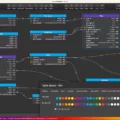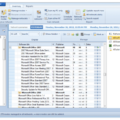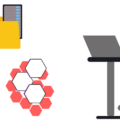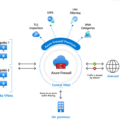When it comes to IT operations monitoring, there are many different options available, such as Datadog and Dynatrace. While both offer similar features, they differ in terms of the type of data they collect and the level of detail offered. In this blog post, we’ll compare Datadog and Dynatrace to help you decide which one is right for your business.
Datadog is a cloud-based monitoring and analytics solution designed for DevOps teams. It provides unified metrics from all of your applications, servers, containers, networks, and services in one place. It also offers advanced features like anomaly detection and alerting capabilities that are tailored to your environment. Additionally, it has integrations with other popular services like Slack and PagerDuty that allow you to quickly respond to any issues that may arise.
Dynatrace is a comprehensive end-to-end observability platform designed for modern infrastructures and distributed applications. It offers more advanced AI-powered features than Datadog such as APM (Application Performance Management). This allows users to gain insights into how their applications are performing as well as detect any potential problems before they affect user experience or business intelligence. Additionally, Dynatrace can monitor user experience in real-time while providing detailed reports on application performance.
When comparing Datadog and Dynatrace in terms of cost, Datadog is more affordable than Dynatrace; however, it can become costly if you need to store logs for longer periods of time. With Dynatrace you can easily monitor several application versions and systems without additional cost; this makes it the most widely used software across organizations that need reliable monitoring capabilities.
Overall, both Datadog and Dynatrace offer powerful solutions when it comes to monitoring modern infrastructures; however, depending on your specific needs one might be better suited than the other. If you’re looking for an affordable solution with basic monitoring capabilities then Datadog might be a good option for you; however, if you require more advanced AI-powered features then Dynatrace might be the better choice.
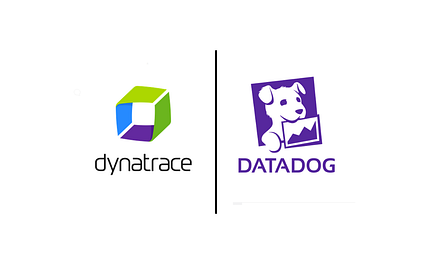
Comparing Datadog and Dynatrace
The answer to whether Datadog is better than Dynatrace depends on the specific needs of a customer. Datadog provides comprehensive monitoring and analytics tools for IT Infrastructure and applications, while Dynatrace offers more advanced and better integrated AI-powered features such as Application Performance Management (APM). In this case, if an organization is looking for more sophisticated APM capabilities, then Dynatrace may be the better choice. However, if an organization is looking for a wider range of functionality or prefers an easy-to-use interface, then Datadog might be the better option.
What is the Datadog Competition?
Datadog’s competitors include a wide range of companies from different industries. Moogsoft is a cloud-based AI and machine learning platform that helps organizations monitor their IT infrastructure. Dynatrace is an enterprise-level monitoring and performance management software. MongoDB, Inc. provides a database platform for application developers, enabling them to store, query, and analyze data in the cloud or on-premise. Dataminr is an AI-driven platform that helps corporations make sense of real-time data. Finally, AppDynamics is an application performance monitoring solution that provides insights into how applications are performing in production environments. All of these companies provide services that compete with those offered by Datadog, making them formidable competitors in the market.
Why Dynatrace is the Best Solution for Your Business
Dynatrace is the best monitoring platform because it offers a comprehensive, expandable, and flawless solution for application and system monitoring. It provides real-time user monitoring capabilities to ensure that applications are functioning optimally at all times. With Dynatrace, you can monitor several application versions, test environments, and systems quickly and accurately. Moreover, it offers a range of advanced features such as deep-dive analytics, anomaly detections, and performance optimization tools to help you uncover hidden performance bottlenecks. The platform is also designed to be easily configured so that you can customize the settings to meet your specific needs. Additionally, its intuitive dashboard allows users to gain insight into the performance of their applications in real time with detailed analytics and reporting capabilities. With Dynatrace’s proactive approach to monitoring, you can stay one step ahead of any potential issues before they become problems.
Does Amazon Utilize Datadog?
Amazon does not use Datadog, but it does recognize the value of the platform. As an AWS Advanced Technology Partner, Datadog provides a comprehensive monitoring and analytics platform that helps customers to ensure their AWS environments are running smoothly and securely. Through its integration with Amazon Web Services (AWS), Datadog gives customers real-time visibility into their cloud infrastructure, applications, services, and logs. This enables them to quickly identify and resolve issues across their entire environment. Additionally, Datadog’s DevOps and Containers Competencies make it easier for customers to optimize their AWS deployments through automated containerized applications and microservices-based architectures. By leveraging Datadog’s monitoring capabilities, Amazon customers can gain better insight into their system performance and take proactive steps to prevent outages or other issues.
Comparing Alternatives to Datadog
When it comes to monitoring and metrics software, there is no single solution that fits all businesses. Depending on your specific needs, different services may prove more effective for you than Datadog. Popular alternatives and competitors to Datadog include New Relic, Splunk, Prometheus, Grafana, and AppDynamics.
New Relic provides a comprehensive platform for monitoring application performance, providing insights into how applications are performing in real-time. It offers powerful dashboards and analytics tools to help understand the impact of code changes on application performance across multiple channels. It also has a range of automation tools that can be used to automate repetitive tasks such as code deploys or server maintenance.
Splunk is an advanced log analysis tool that can be used to monitor system logs, network activity, and application performance. It provides powerful data search and analysis capabilities that enable users to quickly identify security threats or performance issues. Splunk also offers powerful machine-learning capabilities which can be used to detect anomalies or trends in data sets.
Prometheus is an open-source metric collection system that provides alerting capabilities for metrics such as CPU utilization or memory consumption. It features an easy-to-use query language for creating sophisticated alerts based on certain conditions being met by monitored metrics. Prometheus also integrates with Grafana for visualizing collected data in beautifully designed dashboards.
Grafana is an open-source dashboard software that allows users to create highly customizable dashboards from collected metrics data from various sources such as Prometheus or InfluxDB. Grafana enables users to create visually appealing graphs and charts from their collected data for quick insights into trends or other information about their systems or applications.
Finally, AppDynamics is a suite of tools designed specifically for monitoring application performance across distributed systems running both on-premises and in the cloud. It provides automated root cause analysis capabilities that enable users to quickly identify the source of any issues they may encounter with their applications without having to manually sift through complex log files or perform tedious manual testing procedures.
The Benefits of Using Datadog
Datadog is the best because it offers a comprehensive, unified platform for monitoring your entire infrastructure and applications. With Datadog, you can gain end-to-end visibility into every component of your system, from metrics and traces to logs and security threats. Moreover, the platform’s intuitive and user-friendly design allows you to seamlessly navigate between all of these data points with ease. This makes it easy to quickly identify and address any issues that may arise. Additionally, Datadog is highly scalable and can be used across any number of systems, making it an invaluable tool for managing your IT environment. Finally, Datadog provides world-class customer support that can help you get the most out of its platform. All in all, Datadog is an excellent choice for gaining full visibility into your environment.
Disadvantages of Using Datadog
One major disadvantage of Datadog is that the more applications and services you integrate with the platform, the slower data delivery may become. This can lead to delays in collecting data from multiple sources and ultimately reduce the effectiveness of the tool. Additionally, Datadog can be complicated for users who are not experienced in tech or coding, making it hard to get started. Finally, depending on your specific use case, Datadog may require additional plugins or integrations that could add to your overall cost.
Does Google Utilize Datadog?
Yes, Google uses Datadog to monitor their cloud services. Datadog provides Google with real-time insights into the performance of its applications and infrastructure, enabling them to proactively detect and respond to issues. It also enables Google to track changes in the environment over time and spot trends for better optimization of resources. By integrating with Google Cloud Run, Datadog automatically scales as GCP infrastructure grows, collecting data in real-time and providing detailed visibility into the health of their systems.
Popularity of Datadog
Datadog is popular for its ability to provide comprehensive monitoring and visualization of the performance of applications across multiple environments, from servers and containers to cloud services. It provides users with an intuitive dashboard that can be easily customized to display the key performance metrics of their application in real time. Additionally, Datadog offers a wide range of integrations with other services, such as AWS and Azure, which makes it easy to monitor and manage a variety of infrastructure components from one central location. Furthermore, its artificial intelligence-based anomaly detection capabilities provide users with early warning signals about potential issues in their application’s performance. All these features combined make Datadog a powerful tool for monitoring applications and optimizing their performance.
Does Google Utilize Dynatrace?
Yes, Google uses Dynatrace for intelligent monitoring of services running in its cloud. Dynatrace provides comprehensive support for Google Cloud Services across a wide range of environments, from on-premise to hybrid and Google Cloud. It offers fully automated, AI-assisted observability with automatic full-stack monitoring. This provides Google with unprecedented visibility into the performance and health of its cloud services, enabling them to quickly identify and respond to any issues that may arise.
Conclusion
In conclusion, Dynatrace and Datadog are both powerful monitoring platforms, though they have different functionalities. While Datadog is helpful for monitoring and detection, Dynatrace offers more advanced AI-powered features and a better-integrated platform for APM. With Dynatrace’s expandable and flawless monitoring platform, it has become the most widely utilized software in many organizations. Additionally, while Datadog can be costly when it comes to log analytics workflow, Dynatrace provides a more cost-effective solution for the long-term retention of logs. Both are excellent platforms for monitoring modern infrastructures and distributed applications, but ultimately it depends on the company’s needs as to which platform would be the best fit.



